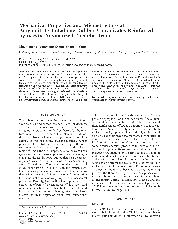摘要
The phenolic resin (PF) was incorporated into acrylonitrile-butadiene rubber (NBR) vulcanizates by in situ polymerization during the vulcanization process. It was found that the tensile strength, tearing strength, and tensile strength (300% elongation) could be considerably enhanced 59.4, 80.2, and 126.4%, respectively, at an optimum PF content of only 15 phr, but the elongation at break and shore A hardness were only slightly affected on the basis of silica-reinforced NBR vulcanizates. A systematic study of the PF structure formed within the NBR matrix using various experimental schemes and procedures has revealed that the PF resin would form the localized discontinuous three-dimensional interconnected network structures in the NBR matrix. The substantial reinforcement of PF on the mechanical properties of vulcanized NBR were attributed to the morphology, high flexibility, and moderate stiffness of the PF phases and their excellent bonding with rubbers through "rubber to rubber" and interface layer.
- 出版日期2007-9-15
- 单位青岛科技大学
